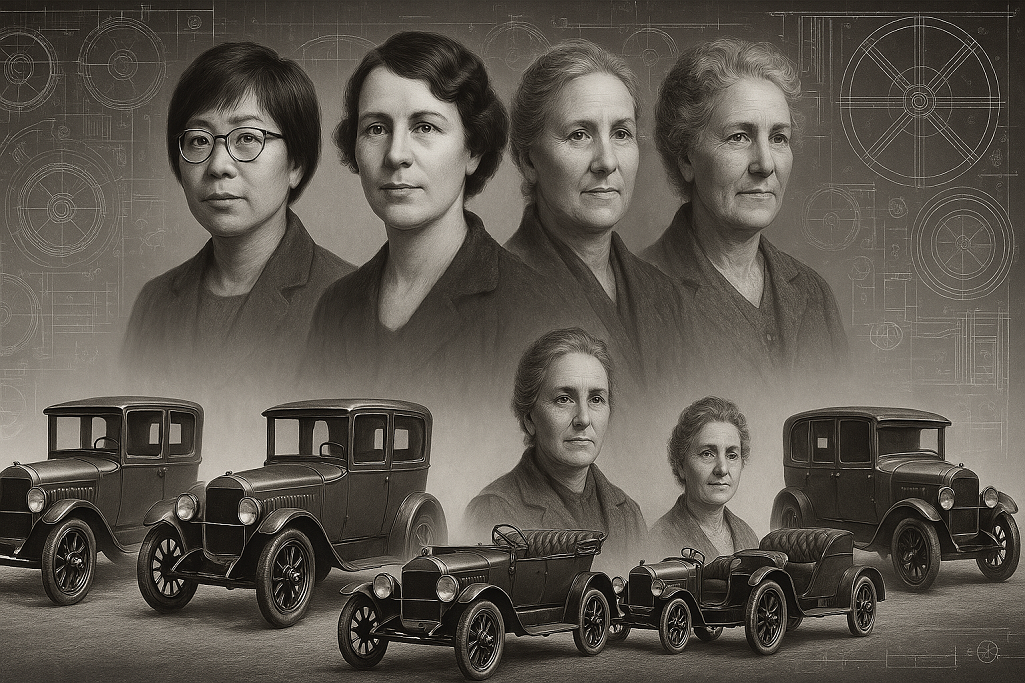
Women Who Revolutionised Auto
At Group1 Cars, we are committed to recognising the innovators who have shaped how we drive today. In this three-part series, we are celebrating 13 extraordinary women whose ideas and inventions transformed motoring history.
In Part 1, we explored the contributions of Ada Lovelace, Bertha Benz, and Dorothy Elizabeth Levitt. Part 2 highlighted the achievements of Edith Marie Flanigen, Hedy Lamarr, Helen Blair Bartlett, and Gladys Mae West.
In the final part of our series, we will spotlight Katharine Blodgett, Florence Lawrence, Margaret A. Wilcox, Margaret Wu, Mary Anderson, and Stephanie Louise Kwolek.
Katharine Blodgett – Inventor Of Non-Reflective Glass

(10 January 1898 – 12 October 1979)
Read more about Katherine here
Katharine Blodgett began her groundbreaking career as a research assistant to Nobel Prize-winning chemist Irving Langmuir at General Electric.
In 1938, General Electric announced her revolutionary invention of non-reflecting, anti-glare glass. This advancement reduced glare and increased visibility, making it invaluable for automobile windshields, camera lenses, and submarine periscopes.
She was also the first woman to earn a PhD in physics at Cambridge University in 1926 and the first female scientist hired at the General Electric Laboratory.
Her innovations extended beyond the automotive industry, contributing to smoke screens used by soldiers in World War II.

(2 January 1886 – 28 December 1938)
Read more about Florence Lawrence here
Often remembered as the “first movie star”, Florence Lawrence was also an inventor ahead of her time.
In 1913, she developed an early turn signal system called the “auto signalling arm”, which raised and lowered to indicate a driver’s intentions. She also created a mechanical brake signal that displayed “Stop” when the pedal was pressed.
Though she never patented these inventions, her ideas laid the foundation for the turn signals and brake lights that are now standard in modern vehicles.
Margaret A. Wilcox – Inventor Of The Car Heater

(Born 1838)
Read more about Margaret Wilcox here
Margaret Wilcox transformed automobile comfort with her invention of the first car heater in 1893. Her innovative system redirected heat from the engine into the cabin, an approach that remains the basis for modern heating systems in vehicles today.
She was one of the few women of her era to receive patents and also designed a combined clothes and dishwasher machine.
Margaret Wu – Inventor Of Synthetic Lubricants
(Born 28 June 1950)
Read more about Margeret Wu here
Margaret Wu’s pioneering work at ExxonMobil changed the field of synthetic lubricants, leading to more energy-efficient vehicles with reduced waste oil.
Her discoveries have been implemented in everything from passenger cars to wind turbines. With over 100 patents to her name, Wu’s contributions continue to shape the future of automotive performance and sustainability.
Mary Anderson – Inventor Of Windshield Wipers

(19 February 1866 – 27 June 1953)
Read more about Mary Anderson here
On a snowy day in New York City, Mary Anderson observed the difficulties drivers faced navigating in poor weather. This inspired her to invent the first manually operated windshield wiper in 1903.
Her invention was not immediately adopted, but it became a standard feature in automobiles by 1922 when Cadillac incorporated it into their vehicles. Her foresight helped pave the way for modern automatic wiper systems that ensure safer driving conditions.
Stephanie Louise Kwolek – Inventor Of Kevlar

(31 July 1923 – 18 June 2014)
Read more about Stephanie Louise Kwolek here
While working at DuPont, Stephanie Kwolek discovered Kevlar, a synthetic fibre five times stronger than steel.
Though widely known for its use in bulletproof vests, Kevlar also revolutionised the automotive industry, making tyres lighter, more durable, and resistant to punctures.
Her groundbreaking work earned her the National Medal of Technology in 1996 and an induction into the National Inventors Hall of Fame in 1995.
Celebrating Women Who Made History
At Group1 Cars, we are proud of these remarkable women whose brilliance, determination, and ingenuity shaped the vehicles we love today. Their stories serve as a reminder that the road to innovation is paved by those who dare to challenge conventions and push boundaries.

